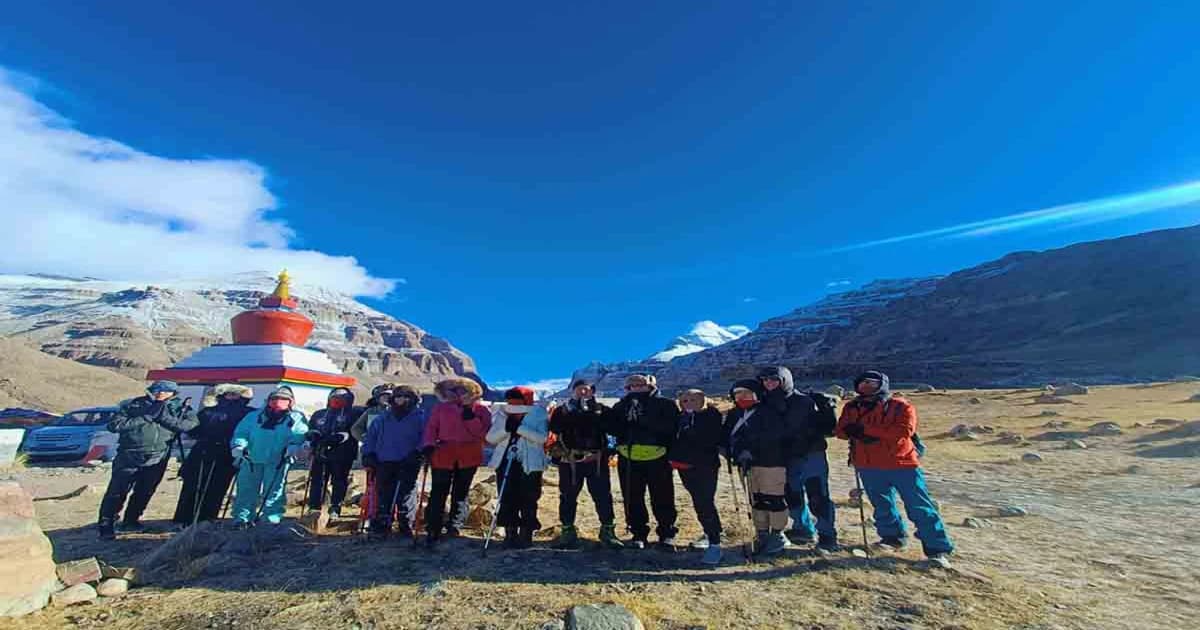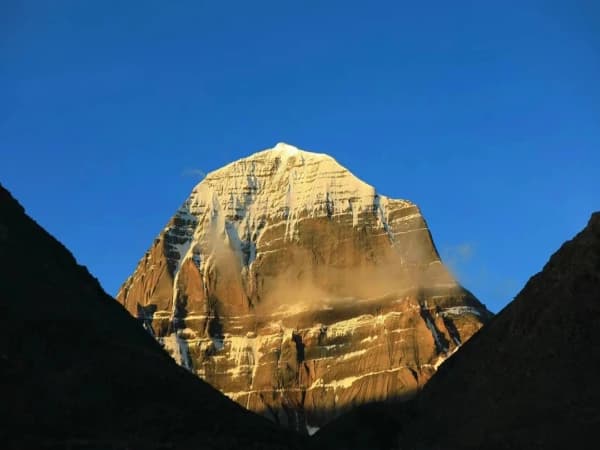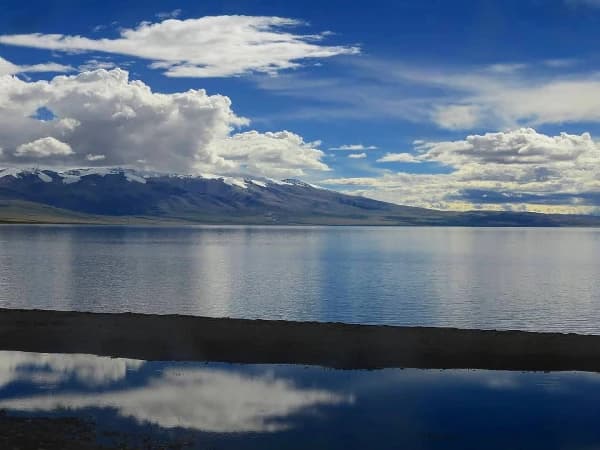Saga Dawa Festival: A Spiritual Journey to Mount Kailash
Mount Kailash, a revered peak in the remote region of western Tibet, holds profound significance in the hearts of Hindus, Buddhists, Jains, and Bon practitioners. Among the many spiritual events that occur in the shadow of this sacred mountain, the Saga Dawa Festival stands out as a deeply spiritual celebration. This annual festival attracts thousands of pilgrims from across the globe, offering them a chance to honor the teachings of Lord Buddha and to participate in acts of devotion that hold immense religious and cultural importance.
What is the Saga Dawa Festival?
Saga Dawa, also known as the "Month of Merits," is a month-long celebration observed by Tibetan Buddhists. The festival’s name derives from the Tibetan lunar calendar, with “Saga” referring to a prominent star seen during the period and “Dawa” meaning month. Saga Dawa is celebrated in the fourth month of the Tibetan calendar, usually falling between May and June. The 15th day of this month, known as Saga Dawa Duchen, marks the festival’s pinnacle. This day commemorates the three most significant events in Lord Buddha’s life: his birth, enlightenment, and parinirvana (death).
For devotees, Saga Dawa is an opportunity to engage in spiritual practices, accumulate merit, and reflect on the core teachings of Buddhism. Pilgrims circumambulate Mount Kailash, light butter lamps, and perform acts of charity, all while immersing themselves in the sacred energy of this ancient celebration.
The Importance of Mount Kailash in Saga Dawa
Mount Kailash, standing at 6,638 meters (21,778 feet), is not only a geographical marvel but also a spiritual nucleus. This pyramid-shaped peak is considered the abode of Lord Shiva by Hindus, the axis mundi (center of the universe) by Buddhists, the site of liberation for Jains, and a holy mountain by Bon practitioners. During Saga Dawa, the mountain’s spiritual aura is magnified, drawing pilgrims from all corners of the world to its base.
The act of circumambulating Mount Kailash, a ritual known as the "Kora," is central to the festival. Completing the 52-kilometer (32-mile) circuit on foot is believed to cleanse sins, enhance spiritual growth, and bring blessings for future lives. For many, the Kora during Saga Dawa holds extra significance, as the month is considered an auspicious time to amplify one’s positive karma.
Religious Significance of Saga Dawa
Saga Dawa’s profound religious importance is rooted in its connection to Lord Buddha’s life. Each of the three events commemorated during the festival – birth, enlightenment, and parinirvana – symbolizes a core tenet of Buddhist philosophy:
- Birth of Buddha: The birth of Siddhartha Gautama in Lumbini symbolizes the potential for enlightenment present in all beings. Pilgrims honor this event by engaging in rituals that celebrate the purity and potential of human existence.
- Enlightenment: Buddha’s attainment of enlightenment under the Bodhi tree in Bodh Gaya serves as a reminder of the power of meditation, mindfulness, and the pursuit of wisdom. During Saga Dawa, practitioners deepen their meditation practices, often dedicating merit to all sentient beings.
- Parinirvana: Buddha’s passing into Nirvana signifies the ultimate liberation from the cycle of birth and rebirth. Pilgrims reflect on the impermanence of life and the importance of compassion, generosity, and ethical conduct.
How the Saga Dawa Festival is Celebrated
The Saga Dawa Festival is marked by an array of spiritual and cultural activities, each designed to foster a sense of community, devotion, and spiritual awakening:
1. Raising the Tarboche Flagpole
One of the most iconic events of Saga Dawa is the ceremonial raising of the Tarboche flagpole near Darchen, a small settlement at the base of Mount Kailash. The flagpole, adorned with colorful prayer flags, represents the connection between heaven and earth. Monks and pilgrims gather to chant prayers and perform rituals, ensuring the pole’s correct alignment. It is believed that a properly raised flagpole brings blessings to the region and its inhabitants.
2. Circumambulation (Kora)
Thousands of pilgrims undertake the challenging Kora around Mount Kailash during Saga Dawa. The circuit is traditionally completed in a clockwise direction by Buddhists and Hindus, while Bon practitioners and some Jains walk counterclockwise. The arduous journey, which takes two to three days for most, passes through sacred sites such as the Dolma La Pass, the highest point on the trail at 5,636 meters (18,500 feet).
3. Lighting Butter Lamps
Lighting butter lamps is a significant ritual during Saga Dawa. Pilgrims offer these lamps at monasteries and shrines, symbolizing the dispelling of ignorance and the illumination of wisdom. The flickering lights create a serene and contemplative atmosphere, inspiring devotees to reflect on their spiritual path.
4. Acts of Generosity
Saga Dawa is a time for practicing generosity, a central virtue in Buddhism. Pilgrims donate to monasteries, feed animals, and provide alms to beggars. These acts of kindness not only accumulate merit but also spread joy and compassion among all participants.
5. Chanting and Meditation
Throughout the month, Tibetan monasteries resonate with the sound of chanting and the rhythm of meditation practices. Monks recite scriptures, perform rituals, and lead pilgrims in prayers, creating an atmosphere charged with spiritual energy.
The Cultural Significance of Saga Dawa
Beyond its religious dimensions, the Saga Dawa Festival is a vibrant cultural event that showcases the rich traditions of Tibetan society. The festival brings together diverse communities, fostering a sense of unity and shared purpose. Traditional music, dance, and art play a significant role, adding color and vitality to the celebrations.
For international visitors, Saga Dawa offers a unique opportunity to experience Tibetan culture firsthand. Travelers can witness the devotion of pilgrims, participate in rituals, and explore the breathtaking landscapes of the Mount Kailash region. However, it is essential for visitors to approach the festival with respect and sensitivity, recognizing its sacred nature.
Practical Tips for Attending the Saga Dawa Festival
If you plan to attend the Saga Dawa Festival at Mount Kailash, here are some practical tips to ensure a meaningful and enjoyable experience:
- Plan Ahead: The festival attracts a large number of pilgrims, so it is essential to book your travel and accommodations well in advance.
- Prepare for High Altitude: Mount Kailash is located at a high altitude, and the Kora involves significant physical exertion. Acclimatize properly and consult your doctor before undertaking the journey.
- Dress Modestly: Wear modest clothing that covers your shoulders and knees. Comfortable, sturdy footwear is essential for the Kora.
- Respect Local Customs: Follow local customs and guidelines, particularly when visiting monasteries and sacred sites. Avoid photographing people or rituals without permission.
- Carry Essentials: Bring warm clothing, a good quality sleeping bag, and sufficient food and water. Trekking poles and portable oxygen cylinders can also be helpful.
- Engage with Locals: Take the time to learn from local guides and interact with fellow pilgrims. Their insights can enhance your understanding of the festival’s significance.
The Saga Dawa Festival at Mount Kailash is a profound celebration of spirituality, devotion, and cultural heritage. It offers pilgrims and visitors a chance to reflect on the teachings of Lord Buddha, connect with the sacred energy of Mount Kailash, and participate in rituals that transcend religious boundaries. Whether you are a devout follower or a curious traveler, attending Saga Dawa promises to be a transformative experience, leaving you with memories and insights that will last a lifetime.




